Introduction
The Curious Case of Chatty Cats: Why The Siamese Cats Meow Are So Well Known
Siamese cats meow, its obvious and they are renowned for their melodious meows and endless vocalizations. If you’ve ever met one, you know they don’t simply “meow”—they talk, converse, and sometimes even demand your attention with theatrical flair. These feline chatterboxes have a reputation for being one of the most vocal breeds, often leaving owners entertained, puzzled, or occasionally overwhelmed by the sounds they have heard. But what makes their voices so distinctive? And why are Siamese cats so chatty compared to other cats?
Setting the Stage: Understanding Feline Communication
Cats, by nature, are communicative creatures, and their meows are far more than random sounds. Feline vocalization is an art form of its own—a way for cats to interact with humans and their environment. Unlike dogs that bark to warn, play, or protect, cats have evolved their meows primarily to communicate with humans. In the case of a Siamese cats meow, this vocal ability is dialed up to ten.

Table of Contents
What Makes a Siamese Cat So Vocal?
A Breed Unlike Any Other: The Siamese Cat’s Unique Personality
The Siamese breed is known for its extroverted, engaging, and even theatrical personality. They often meow while walking around the house, indicating their sense of security and fulfillment of needs within their home. Unlike cats that prefer solitude, Siamese cats thrive on interaction and attention. Whether they’re feeling playful, hungry, or lonely, Siamese cats meow and will certainly make sure you hear about it. This distinct vocal behavior is part of their charm and what sets them apart from more reserved breeds.
The Science of Meows: How Cats Use Their Voices to Talk to Humans
Siamese cats have honed the art of meowing to communicate directly with humans. Even as kittens, Siamese cats are known to be vocal, using their meows to communicate their needs and emotions from an early age. Unlike wild cats, who reserve vocalizations for specific situations, domesticated cats have adapted their sounds to interact with people. Siamese cats, with their unique personalities, take this a step further. Each tone, pitch, and frequency can indicate different emotions—hunger, joy, loneliness, or curiosity. It’s almost as if they’ve tailored their voices to imitate the patterns of human speech.
Genetics and Evolution: Why Siamese Cats Meow So Darn Loud? They Developed a Strong Voice
The Siamese cats meow via their vocal nature may have an evolutionary explanation. Originating in Thailand, these cats were historically companions to royalty and temple dwellers. Their ability to vocalize likely strengthened their role as both companions and protectors. Additionally, selective breeding over time emphasized their sociable nature, and vocal traits became a hallmark of the breed. The genetics that control their striking appearance may also play a role in their vocal cords’ strength and unique sound production.
The Different Types of Siamese Cat Sounds
The Classic “Meezer” Meow: A Sound Unlike Any Other
The Siamese “meezer” meow is perhaps their most iconic sound. It’s a loud, elongated, and sometimes theatrical cry that can be surprisingly human-like. This distinctive sound is unlike the softer, muted meows of other breeds. When a Siamese cat “meezes,” it’s usually with purpose, and you’ll know they have something important to say.
Chirps, Trills, and Yowls: The Siamese Cat’s Vocal Vocabulary
Siamese cats don’t just stop at the classic meow—they’re vocal artists with a full repertoire of sounds. Chirps are often playful greetings, while trills signal excitement or affection. Their yowls, on the other hand, can be dramatic, signaling anything from frustration to a deep need for attention. Understanding this vocal vocabulary can help owners decode their Siamese cat’s moods and needs.
Soft Murmurs vs. Loud Cries: Decoding the Volume of Their Voice
While Siamese cats are infamous for their loud vocalizations, they also have a gentler side. Soft murmurs and coos are common when they’re content, relaxed, or enjoying a cuddle. On the other hand, loud cries we are used to when siamese cats meow can mean they’re demanding food, attention, or expressing discomfort. Siamese cats are true masters of adjusting volume and pitch to suit the situation.
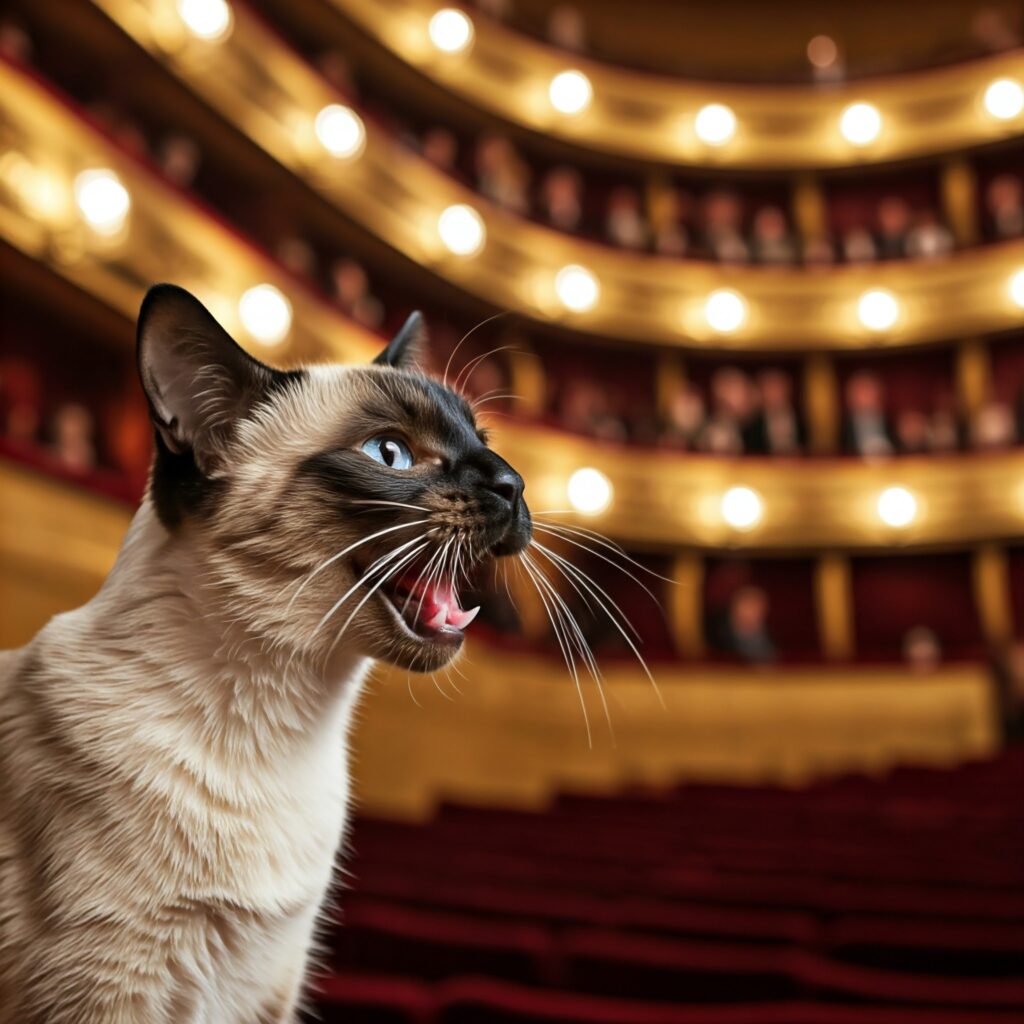
The Reasons Siamese Cats Meow So Much
Siamese cats crave attention like no other. They thrive on companionship and interaction, often using their voice to grab your focus. Whether you’re working, watching TV, or simply ignoring them, a Siamese cat will make sure they become the center of attention. I don’t know about you, but this kinda sounds like me when I get hungry.
Hunger Calls: How Siamese Cats Use Meows to Demand Food
Siamese cats are not shy about letting you know when it’s mealtime. Their vocal nature means they will often “remind” you—loudly—when their food bowl is empty or even if they think it’s time for a treat. Their hunger meows are persistent and hard to ignore.
Boredom or Loneliness: A Cry for Playtime or Companionship
A bored, scared, or lonely kitty will often meow when they long for the building of relationship. These cats need mental stimulation and interaction to remain happy. Without enough toys, playtime, or human engagement, their meows can turn into a plaintive cry for companionship.
Stress and Anxiety: When Meowing Becomes a Signal for Help
Siamese cats meow as they are sensitive creatures, and stress or anxiety can amplify their vocal behavior. If a Siamese cat has recently moved to a new environment, this change can trigger increased vocalization due to stress or anxiety. Changes in routine, a new environment, or separation from their owners may trigger excessive meowing. These vocalizations often carry a more distressed tone, signaling that something is amiss.
The Joyful Meow: Expressing Excitement and Happiness
Not all meows are demands. Siamese cats also use their voice to express joy and excitement. When you come home, open a favorite toy, or call their name, you might hear a happy trill or a series of upbeat meows that reflect their elation.
Nighttime Serenades: Why Siamese Cats Meow More After Dark
Siamese cats are notorious for their nighttime meowing sessions. Sometimes, a Siamese cat may meow at night to signal that their litter box needs attention. Their nocturnal tendencies can lead to bursts of vocalization in the silent middle of the night. This behavior may stem from loneliness, boredom, or an instinctual connection to their wild ancestors, who were more active at night.

How the Siamese Cats Meow Through History Influences Its Voice
From Thai Temples to Royal Palaces: A History of Communication
Siamese cats were revered in ancient Thailand for their beauty and supposed mystical qualities. They were often guardians of temples and companions to royalty. Their vocalizations likely served as a way to interact with humans, strengthening their bond with the people who treasured them.
The Role of Human Companionship in Siamese Vocal Evolution
Siamese cats have spent centuries by humans’ sides, and this closeness may have shaped their voice. Their vocalizations became more expressive and intricate, reflecting their close relationship with people. As they evolved, they adapted their communication to match human expectations.
Siamese Cats in Folklore: Mythical Stories About Their Meows
Legend has it that Siamese cats were tasked with guarding sacred treasures and communicating with spirits. Their voice was considered a gift, carrying messages between the physical and spiritual worlds. These myths add an enchanting layer to their already mystical meows.
Is Meowing a Sign of Intelligence in Siamese Cats?
The Link Between Vocalization and High Intelligence in Cats
Siamese cats are not only known for their voices but also for their exceptional intelligence. Their frequent and purposeful vocalizations are a sign of their cleverness. They use meows strategically to manipulate their environment and communicate specific needs. Siamese cats learn quickly which sounds grab their owners’ attention, showcasing their ability to problem-solve and adapt. Vocalizing with such nuance reflects a higher cognitive ability, setting them apart as one of the most intelligent cat breeds.
Training Siamese Cats: How They Use Their Voice to Learn and Respond
Siamese cats meows are highly trainable, largely due to their intelligence and strong bond with humans. They are quick to associate vocal cues with actions, whether it’s responding to their name, coming when called, or learning tricks. They often use their own voices to signal comprehension, vocalizing during training sessions or “talking back” to their owners. This eagerness to interact through sound makes training a Siamese both an engaging and rewarding experience.
How to Tell What Your Siamese Cat’s Meow Means
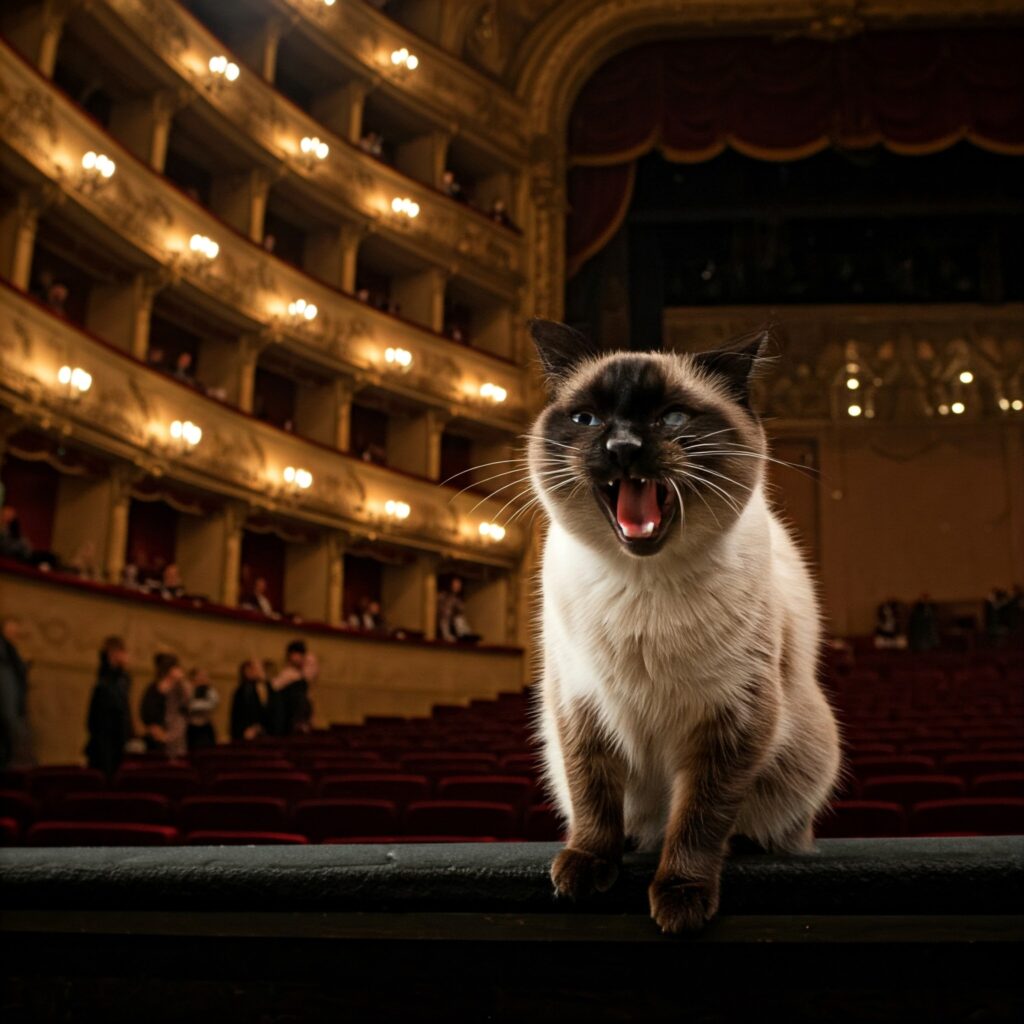
Pitch and Tone: How Siamese Cats Adjust Their Meows for Different Messages
The pitch, tone, and frequency of a Siamese cat’s meow are key to understanding their message. High-pitched meows often signal excitement or urgency, while lower, drawn-out meows can indicate discomfort or frustration. By paying attention to these variations, owners can decode their cat’s needs and emotions. Siamese cats are vocal artists who deliberately adjust their tone to suit each situation.
Body Language Pairing: Understanding the Complete Communication Picture
A Siamese cat’s meow is only part of their communication strategy. Their vocalizations are often paired with specific body language, such as tail flicks, ear positioning, or kneading. A loud, persistent meow combined with pacing may signal hunger, while soft trills paired with headbutts can reflect affection. Understanding both their sounds and body cues ensures owners can respond appropriately to their cat’s needs.
Repetitive Meowing: When It’s Normal and When to Worry
While repetitive meowing can simply reflect an attention-seeking Siamese, excessive vocalization may sometimes indicate underlying issues. Boredom, stress, or medical problems such as hyperthyroidism or pain can cause a Siamese to meow persistently. Recognizing the difference between normal chatty behavior and signs of distress is vital to ensuring your cat’s well-being.
Siamese Cats Compared to Other Vocal Cat Breeds
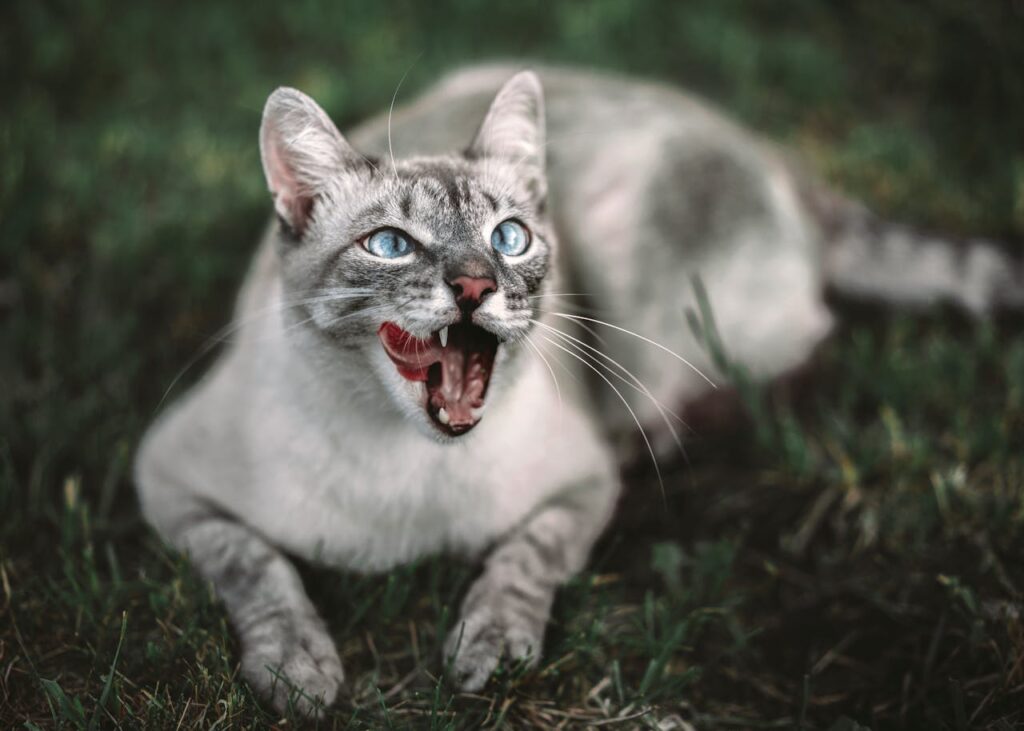
Are Siamese Cats Too Vocal for Some Owners?
Living with a Talkative Cat: Is It a Blessing or a Challenge?
For some, the constant chatter of a Siamese cat is an endearing part of their personality. Others, however, may find the non-stop vocalizations overwhelming. Living with a Siamese requires patience, understanding, and a willingness to embrace their vocal nature. Their talkativeness is often seen as a sign of their affection, not just a nuisance.
Common Complaints: When Constant Meowing Becomes Overwhelming
Some owners may struggle with the intensity of a Siamese cat’s vocalizations, especially if the meowing occurs at inconvenient times, like during the night. Without proper stimulation or attention, Siamese cats may amplify their meows, leading to frustration for owners unfamiliar with the breed’s unique traits.
How to Decide if a Siamese Cat’s Voice Matches Your Lifestyle
Prospective Siamese cat owners should consider whether their lifestyle aligns with the breed’s vocal tendencies. If you enjoy companionship and lively interaction, a Siamese will bring endless joy. However, those seeking a quiet and independent cat may find their chatty nature too demanding.
Tips to Manage and Respond to a Siamese Cat’s Meowing
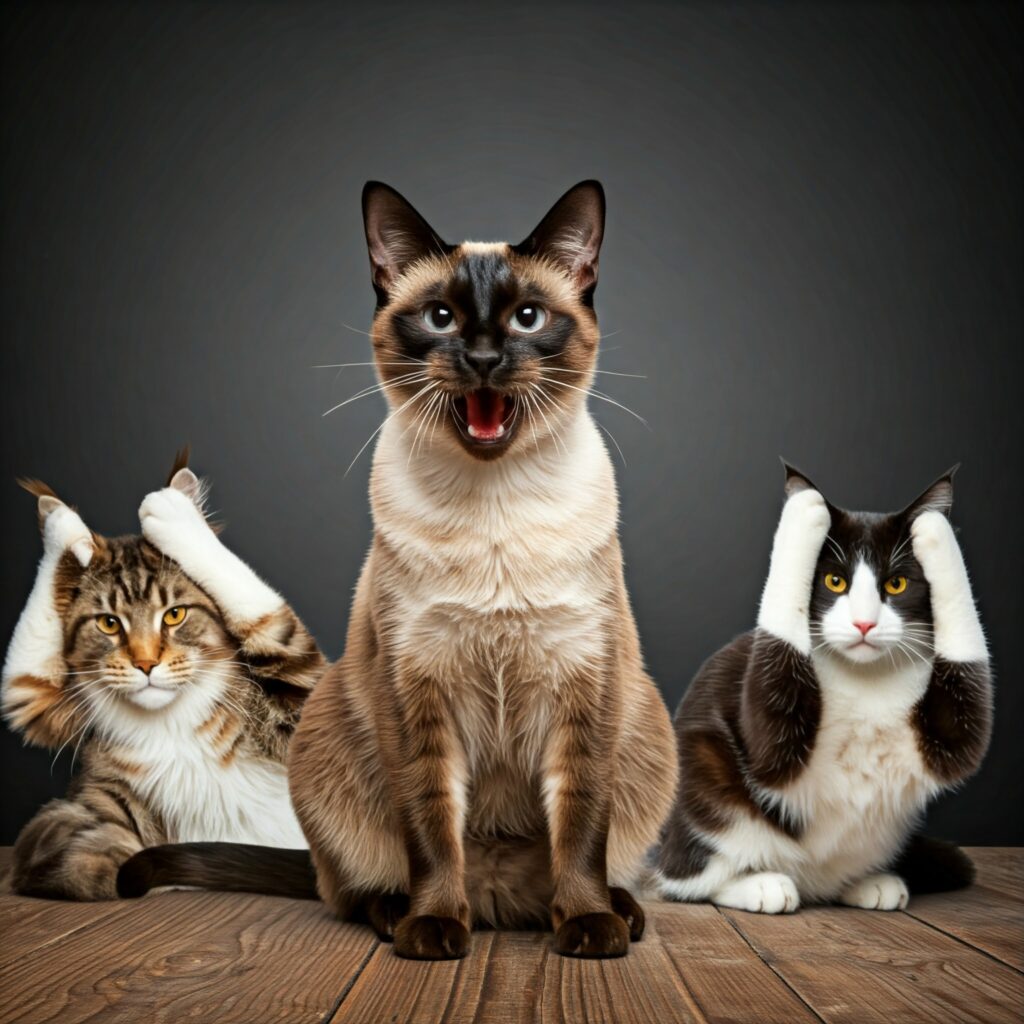
Meeting Their Needs: Reducing Attention-Seeking Meows
Ensuring a Siamese cats meow through physical and emotional needs, are met, is the first step to reducing excessive meowing. Consistent feeding schedules, playtime, and affection help address attention-seeking vocalizations.
Play and Stimulation: Keeping Your Siamese Cat Entertained
Boredom is a major cause of loud meowing. Providing a cat tree can offer both physical exercise and mental stimulation, helping to keep your Siamese cat entertained. Providing interactive toys, scratching posts, and enrichment activities keeps Siamese cats mentally and physically stimulated. Engaged cats are less likely to vocalize out of frustration.
Creating a Routine: Consistency to Calm Excessive Vocalization
Siamese cats thrive on routine. Establishing a consistent schedule for feeding, playtime, and rest can help reduce unnecessary meowing. Predictability offers comfort and security to vocal cats.
When to Seek Veterinary Help: Meowing as a Symptom of Illness
If a Siamese cat’s meowing increases suddenly or becomes more urgent, it could signal a medical issue. Conditions like hyperthyroidism, dental pain, or cognitive decline can amplify vocalizations. Veterinary attention ensures their health is not compromised and helps to stop meowing caused by medical issues.
The Emotional Side of Their Voice: Are They Trying to “Talk”?
The emotional depth in a Siamese cat’s meow is undeniable. Whether expressing love, sadness, or curiosity, their voice often feels like an attempt to “talk” to their humans, bridging the gap between species.
How Siamese Cat Owners Feel About Their Chatter
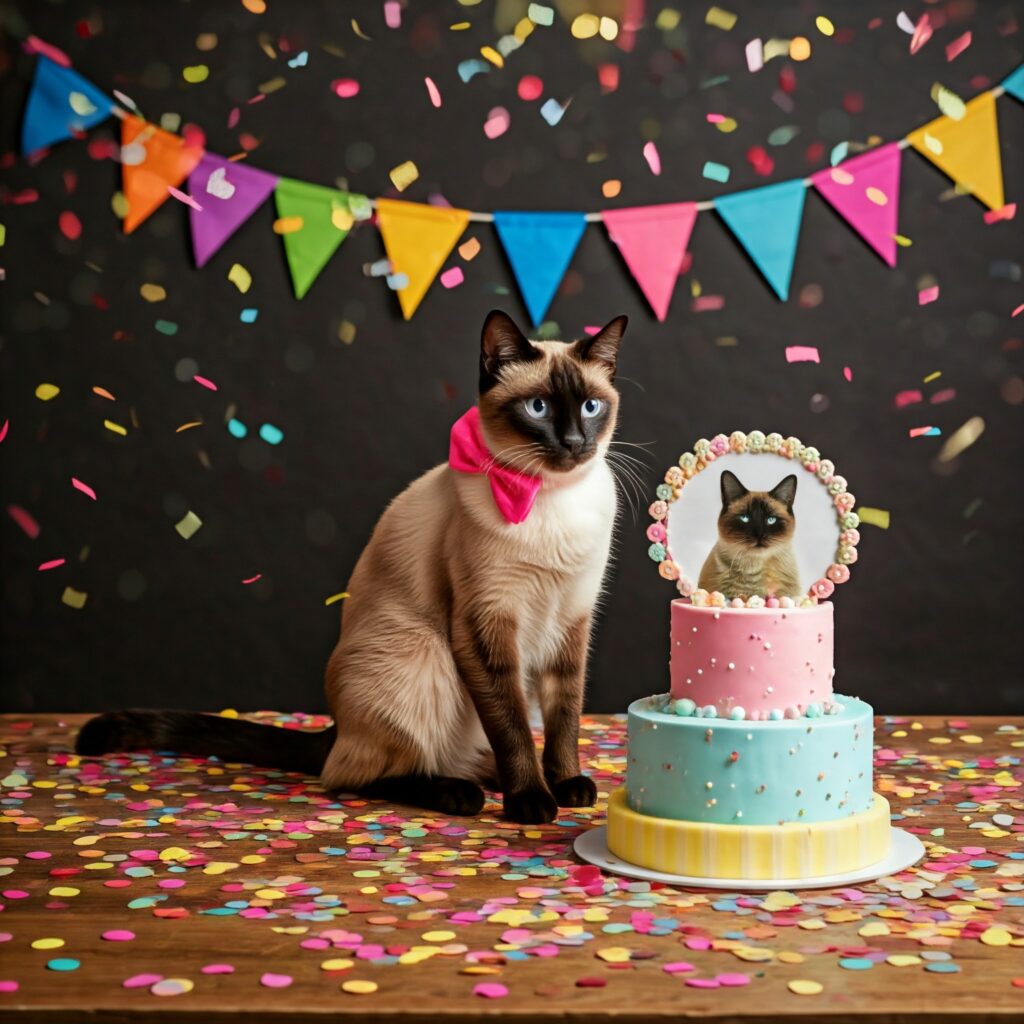
The Cultural Popularity of Siamese Cats and Their Voices
Siamese Cats in Movies and Media: From Animated Stars to Internet Sensations
Siamese cats have become icons in movies and online media, often depicted as elegant, vocal, and entertaining companions.
The Internet’s Obsession with “Chatty Cat” Videos
Siamese cats are stars of viral videos, and their Siamese cats meow adds to their endless comical “conversations” and have captured the hearts of millions.
Conclusion
Decoding the Vocal Truth: Why Siamese Cats Meow Will Always Be Unique Siamese cats are exceptional in their vocal abilities, using their voices to communicate, connect, and express themselves. Their chatty nature is part of what makes them so special.
Celebrating the Voice: Why We Love Their Endearing Siamese cats Meows While their meows may sometimes be overwhelming, they reflect the deep emotional bond Siamese cats share with their humans. Their voices are a celebration of their vibrant personalities.




